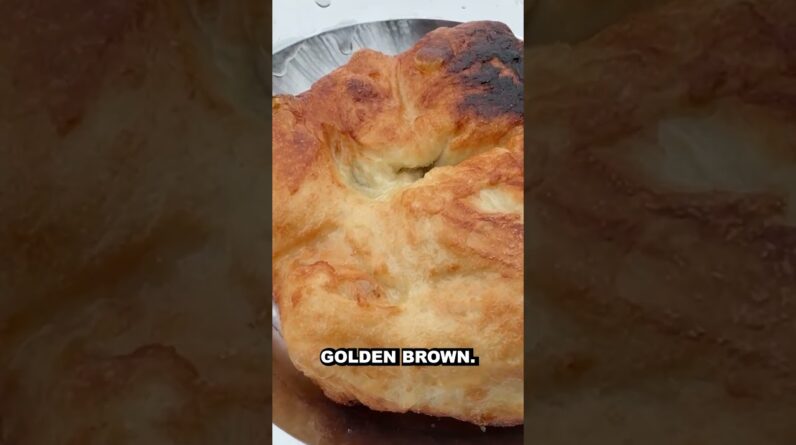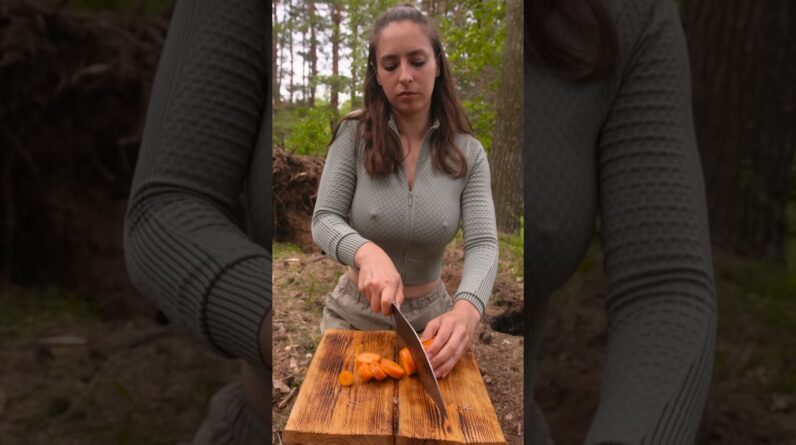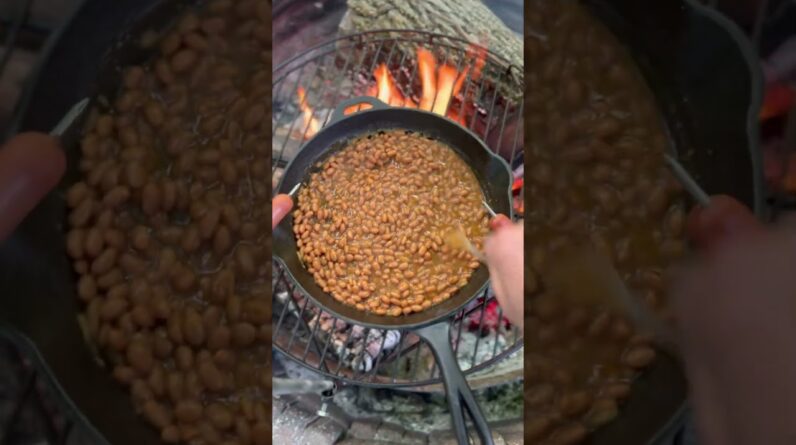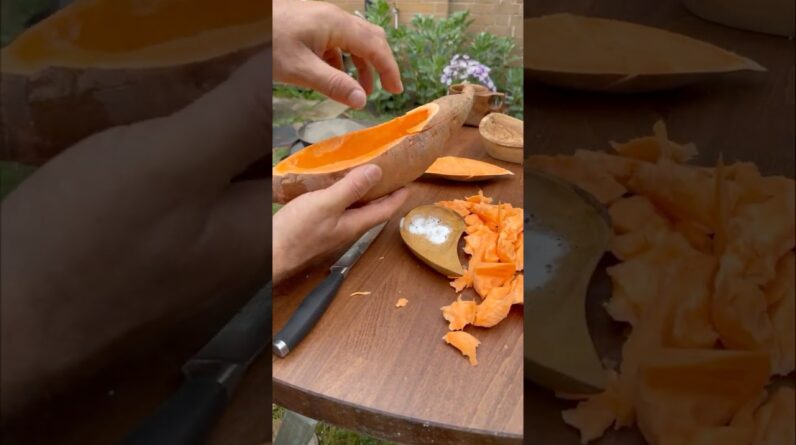
This is a response to several subscribers who asked for a video on food preservation in the 1800s. In this video you will learn about thee major methods: 1) Storage, 2) Drying and 3) Canning. They will be demonstrated with a campfire meal: Beef Jerky, Parched Sweet Corn, Seed Sprouts, Caramel Pudding and Corn Coffee.
See: http://www.youtube.com/watch?v=iL9XzYn66ag http://en.wikipedia.org/wiki/Canning http://en.wikipedia.org/wiki/Food_Preservation , http://www.motherearthnews.com/real-food/how-to-preserve-food-zm0z71zsie.aspx?PageId=1#axzz2YMtvDJM6
BEEF JERKY: I cut 1.5 pounds of brisket into 1/8″ strips, trimming the fat. The meat strips were first merrinated overnight in 1/2 cup Wocestershire sauce, 3 tsp. salt, 1/2 tsp. pepper and 1/2 tsp. onion powder. Then they were placed on a tripod, high above the flame to smoke dry the meat, not cook it. Since it takes several days to dry jerky using this method, I first dryed the meat strips in an oven set at lowest temperature, with the door slightly ajar for 6 hours. I finished drying it over a campfire for 8 hours, to add a smoke flavor.
PARCHED SWEET CORN: This is the sweet corn that I parched a few weeks ago. I cut it off the cob and heated it over a campfire until it turn brown and began to pop. It’s excellent food, highly nutritious, great snack and it can be stored for months. I added a little salt. See: http://www.youtube.com/watch?v=mfbulPGwHQs. The Food Journal of Lewis & Clark, Recipes for an Expedition by Mary Gunderson 2003.
SEED SPROUTS: This is excellent food that can easily be carried on the trail. You can carry the dry seeds and start them any time you want by adding water. Sprouts continue to grow and stay fresh without refrigeration for many days. I started the seeds by soaking them water a few days ago. The seeds were then put in a moistened muslin sack(to grow) outside my Haversack. Sprouts have a long history; there is written evidence that Chinese physicians knew about sprouts and were prescribing them for healing of many disorders over 5,000 years ago. The Book of Daniel in the Bible, mentions sprouting seeds. Captain Cook in the 1770s prescribed eating limes and seed sprouts (both with abundant vitamin C) as a solution to scurvy (vitamin C deficiency). In recent years, eating sprouts has become a trendy food. I highly recommend sprouts as food when hiking. See: http://www.triedtastedserved.com/sprouting/history-sprouts.php , http://outdoorherbivore.com/trail-sprouts/
CARAMEL PUDDING: The recipe is simple. I put a can of condensed milk in water and let it boil for three hours. The milk will caramelize into a sweet pudding. Condensed milk has many uses and was an important field ration by the Union Army during the American Civil War. Condensed milk is sometimes credited as one of the reasons the Union won the war.
Nicolas Appert in France condensed fresh milk in 1820. Gail Border also condensed fresh milk in the US in 1853. Borden used a vacuum pan and was able to reduce milk without scorching or curdling it, becaue the vacuum reduces the boiling point temperature. He also added sugar to the milk to help preserve it. The process was commercially successful. The US government ordered huge amounts as a field ration for the Union soldiers American Civil War. It was an extraordinary food for the 19th century: a typical can contained 1,300 Calories. See: Lincoln’s Labels, America’s Best Known Brands and the Civil War by James M. Schmidt, 2009. http://www.smithsonianmag.com/science-nature/object_sep99.html http://monthsofediblecelebrations.blogspot.com/2011/11/celebrating-gail-borden-and-sweetened.html , http://homecooking.about.com/od/milkproducts/a/canmilkhistory.htm
CORN COFFEE: The Confederates roasted cornmeal as one of many coffee substitutes. Real Coffee was generally not available in the south. The recipe I’m using was printed in the Charleston Mercury, October 5 1861. http://44tennessee.tripod.com/dutchman/jan0002.html The first step was to roast stone-ground corn meal until it turned brown. I roasted the corn meal over a campfire, but you can also use an oven set at 400F.
Videography by Ken Kramm, July 2013, Sam Houston National Forest, Tx, USA; Canon Vixia HFG10, Final Cut Pro X. Frog In The Well by Lucas Gonze, Public Domain, http://freemusicarchive.org/music/Lucas_Gonze/Ghost_Solos/







